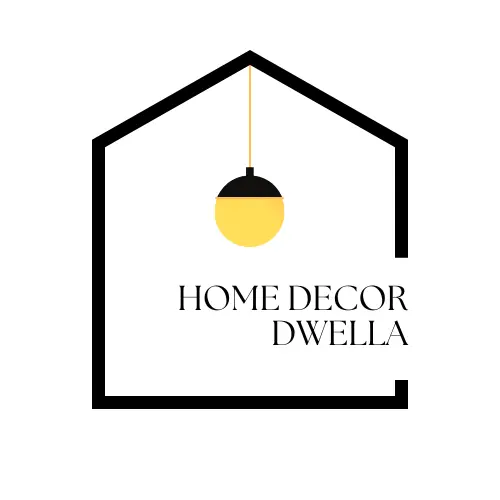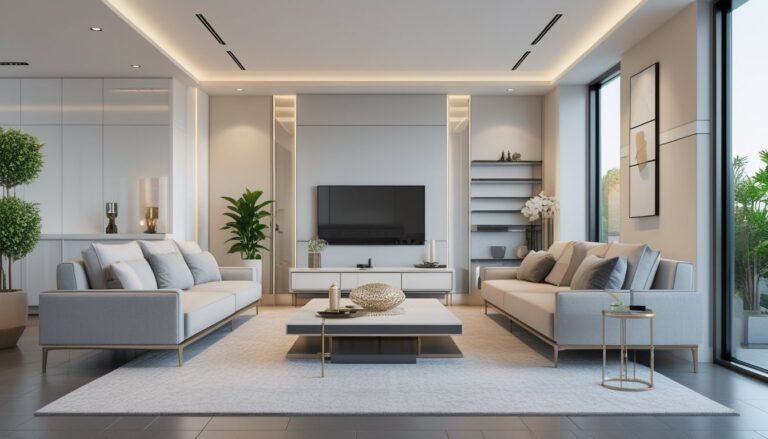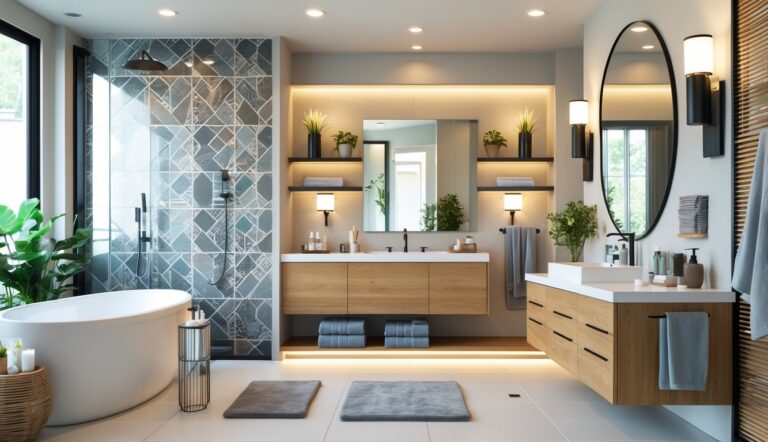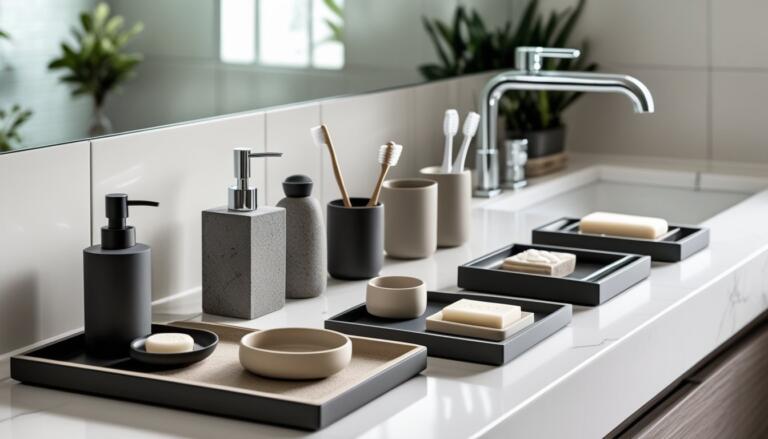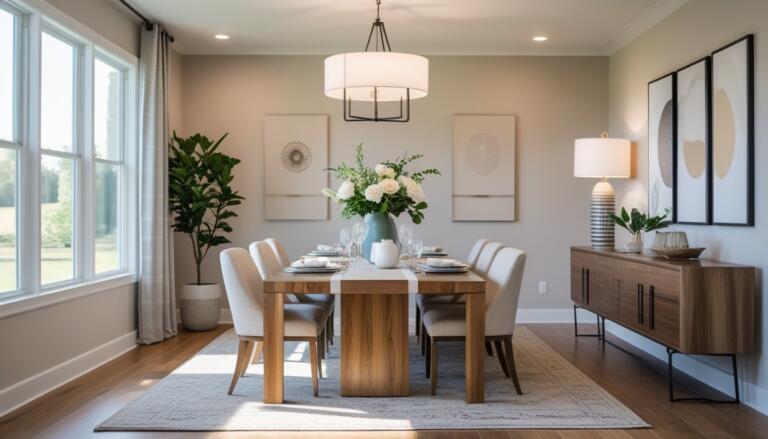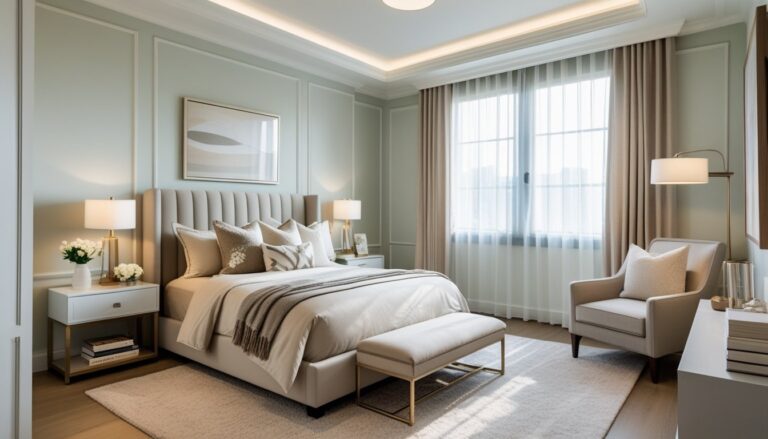10 False Ceiling Living Room Designs to Elevate Your Home Aesthetic
False ceilings have become a popular choice for enhancing the look and feel of living rooms. They provide a way to improve lighting, add texture, and give the space a modern touch without major renovations. Many homeowners seek designs that balance style and practicality.
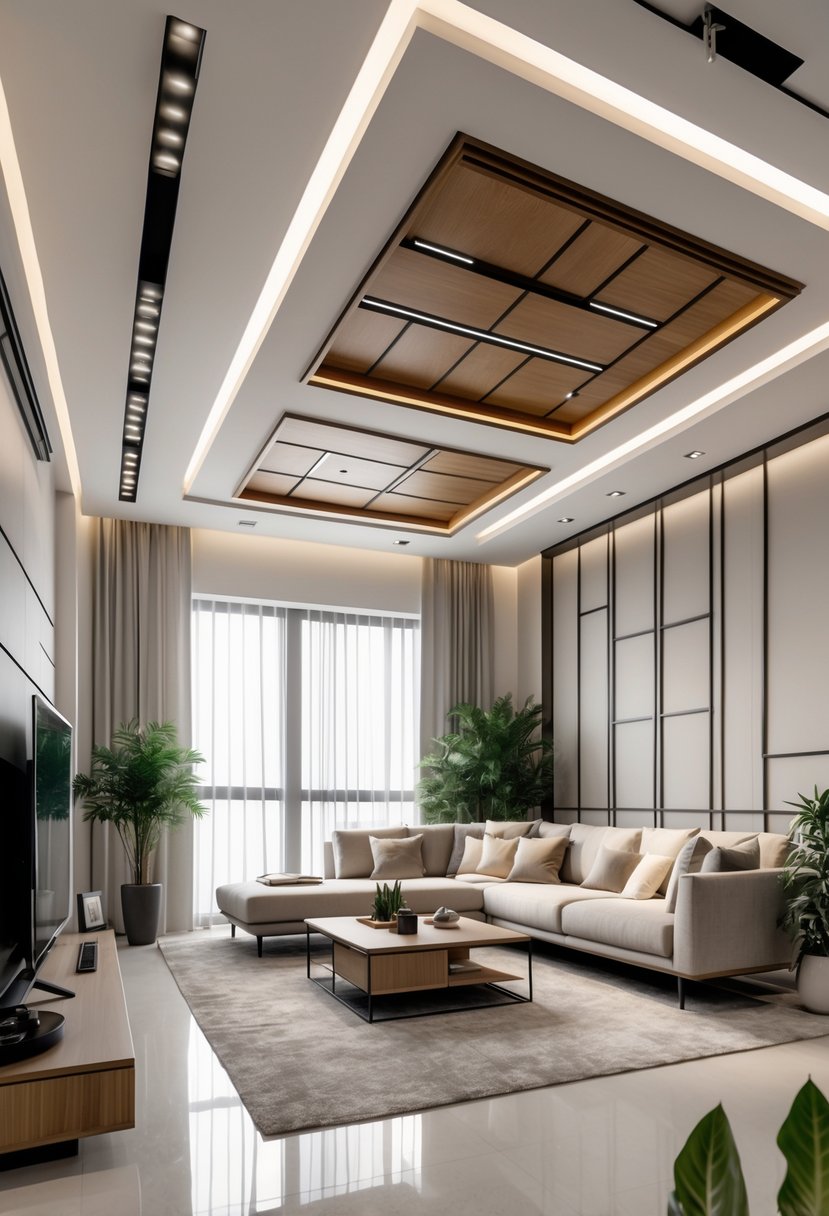
The right false ceiling design can change the entire atmosphere of a living room, making it more inviting and visually appealing. This article presents ten different false ceiling ideas, offering a variety of options for different tastes and room sizes. Each design can help create a unique look suited to individual preferences and needs.
1) Layered gypsum board ceiling
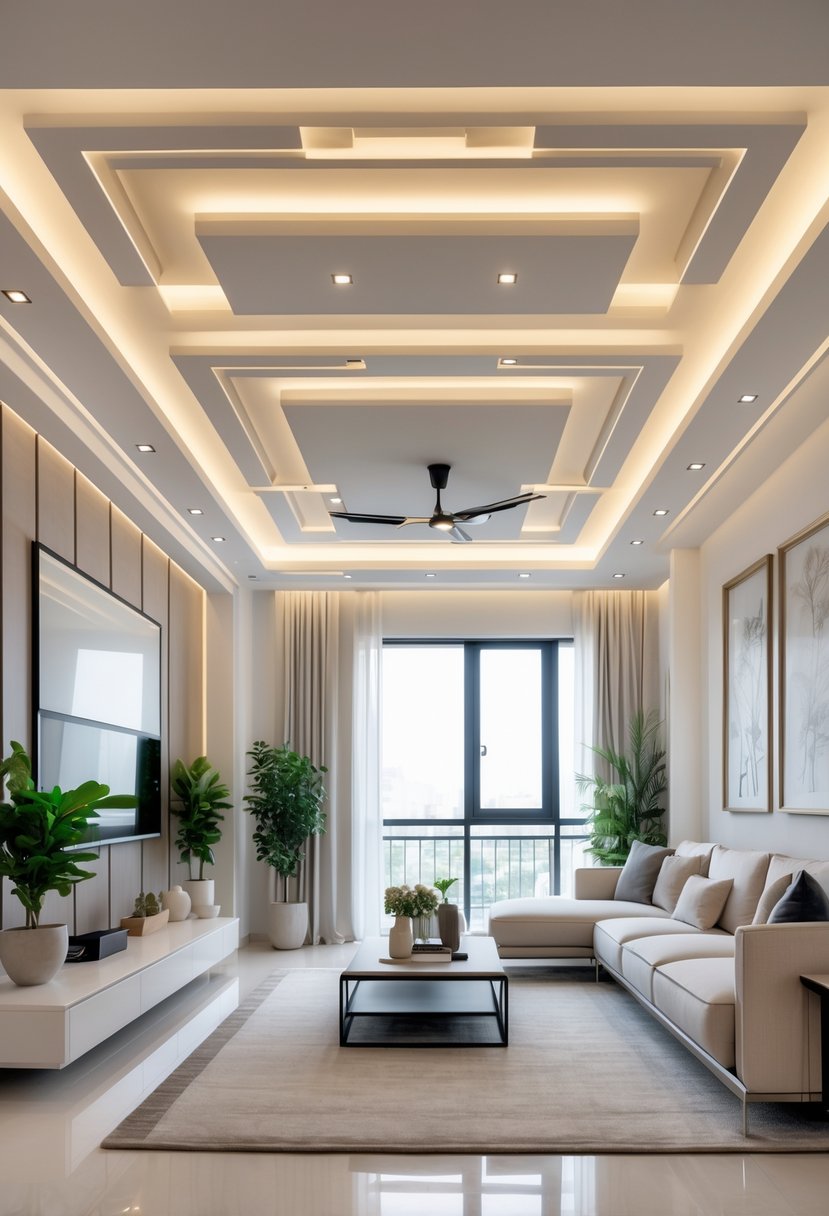
A layered gypsum board ceiling adds depth and dimension to the living room. It allows for creative designs by using different levels. This style works well with recessed lighting to highlight its structure and improve overall lighting.
2) LED strip integrated false ceiling
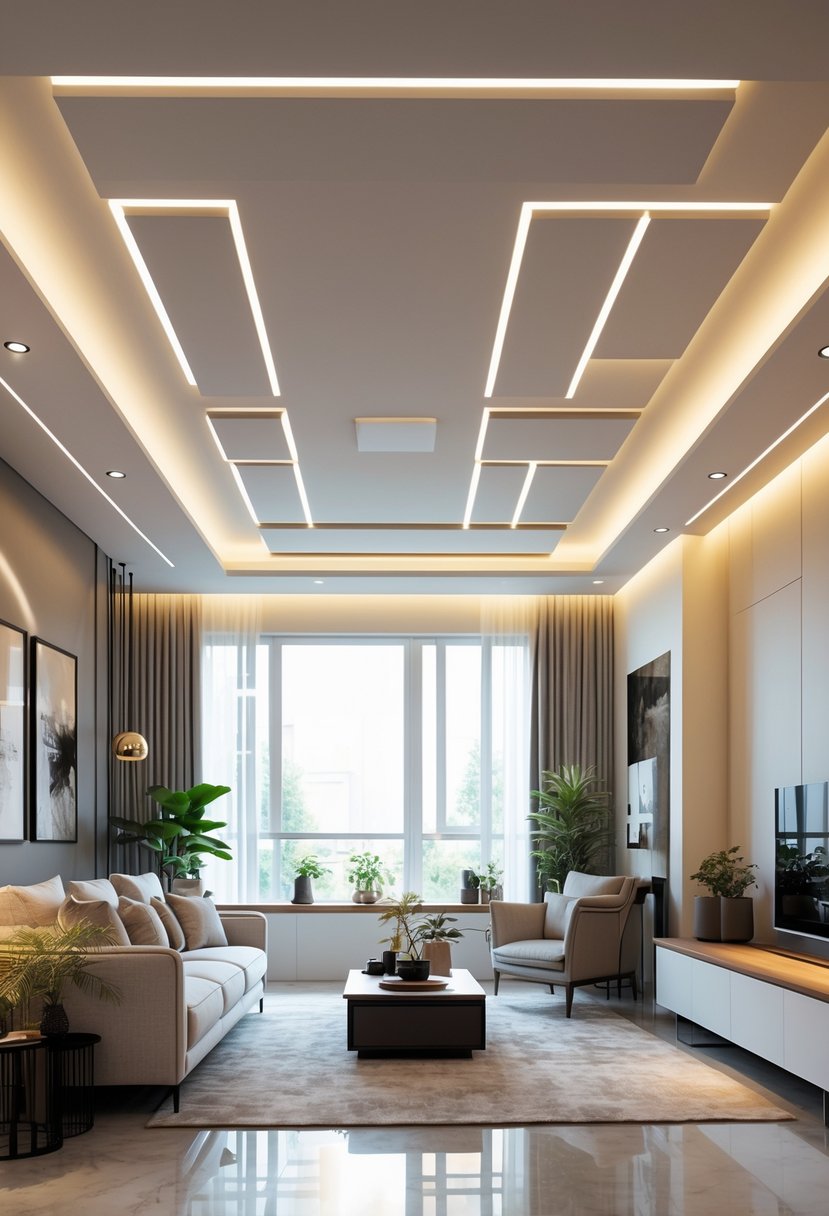
This design uses LED strips hidden within the false ceiling to provide soft, even lighting. It creates a modern and clean look while saving energy. The light can be adjusted to set different moods in the living room. It fits well with minimalist and futuristic ceiling styles.
3) Coffered false ceiling design
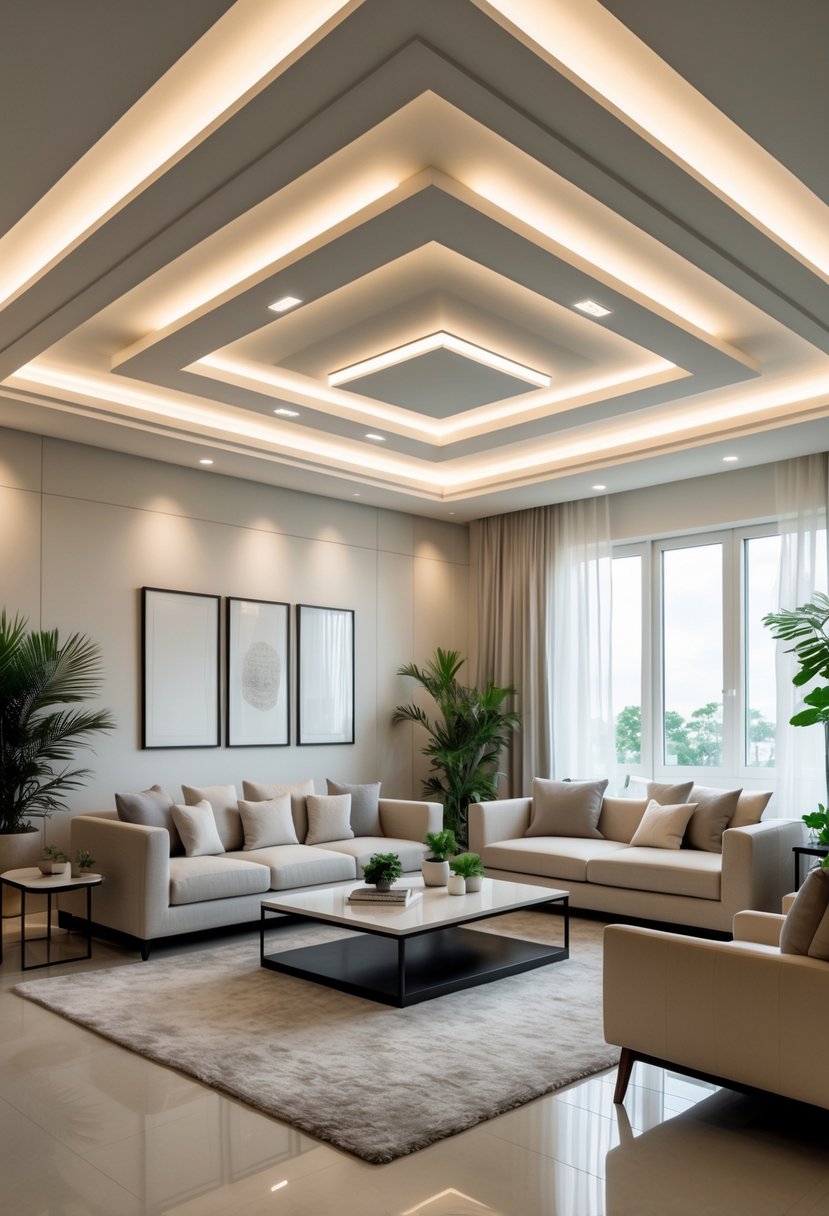
The coffered false ceiling features a grid of recessed panels. It adds depth and a refined look to the living room. This design often uses wood tones or light paints to create a classic and elegant atmosphere.
4) Minimalist white panel false ceiling

The minimalist white panel false ceiling features clean lines and plain surfaces. It adds a sleek, modern look without drawing too much attention. This design helps brighten the room by reflecting light evenly. It fits well in small and large living rooms alike.
5) Wood finish false ceiling

A wood finish false ceiling adds warmth and texture to the living room. It creates a natural look that fits well with many styles. The wood finish also helps with sound insulation, making the space quieter and more comfortable.
6) Geometric pattern false ceiling
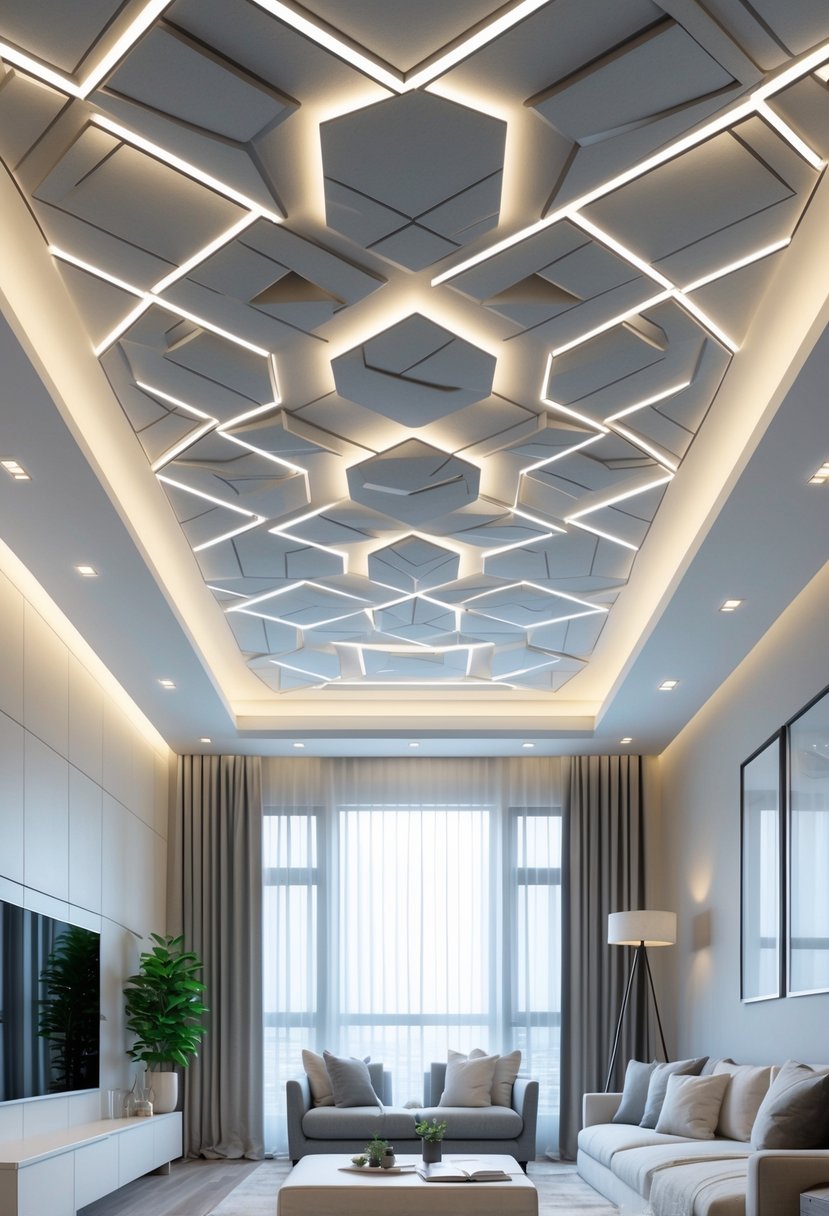
Geometric patterns create a clean, modern look in the living room. Shapes like triangles, squares, and hexagons add visual interest without being overwhelming.
This design can also make the ceiling appear higher and the room more spacious. It suits both bold and subtle styles.
7) False ceiling with recessed lighting
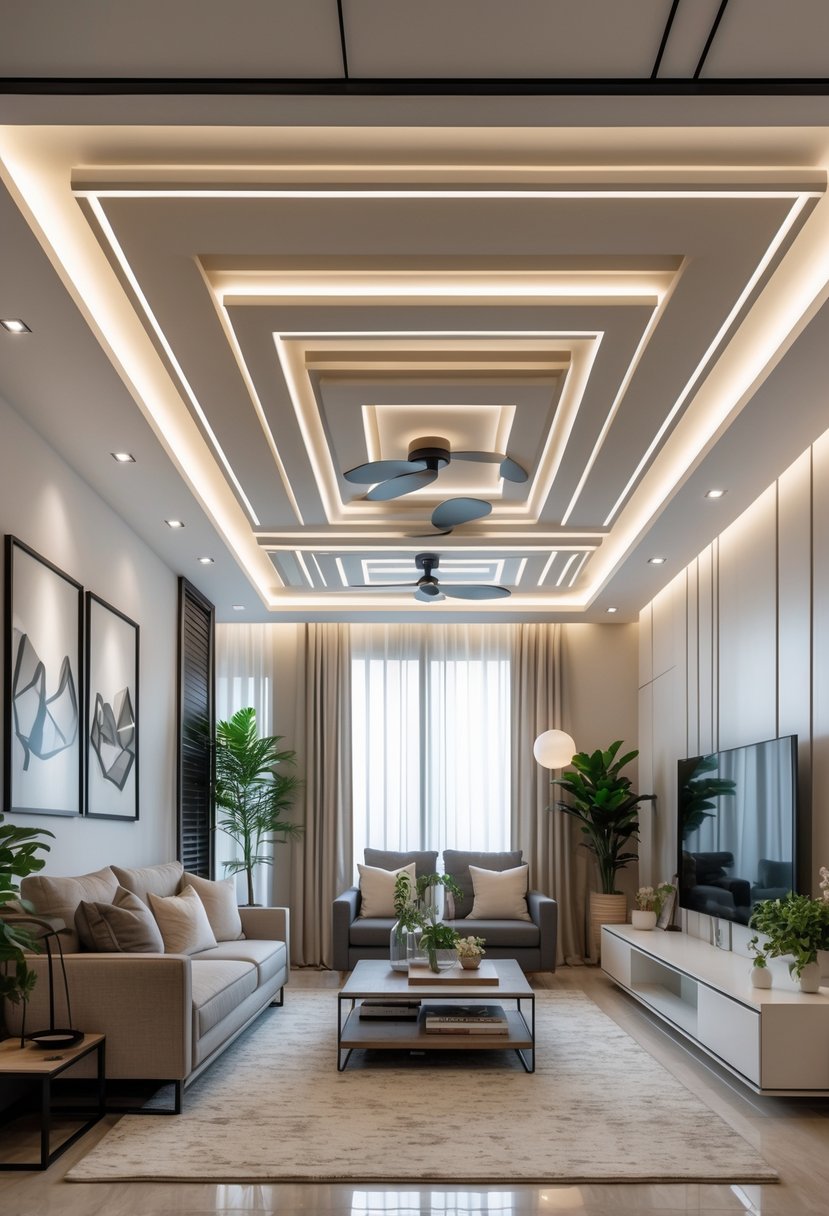
A false ceiling with recessed lighting offers a clean, modern look. It hides the lights within the ceiling, creating soft, even illumination.
This design works well in living rooms by enhancing the space without clutter. It also allows for creative lighting effects while keeping the ceiling smooth and simple.
8) Curved false ceiling design
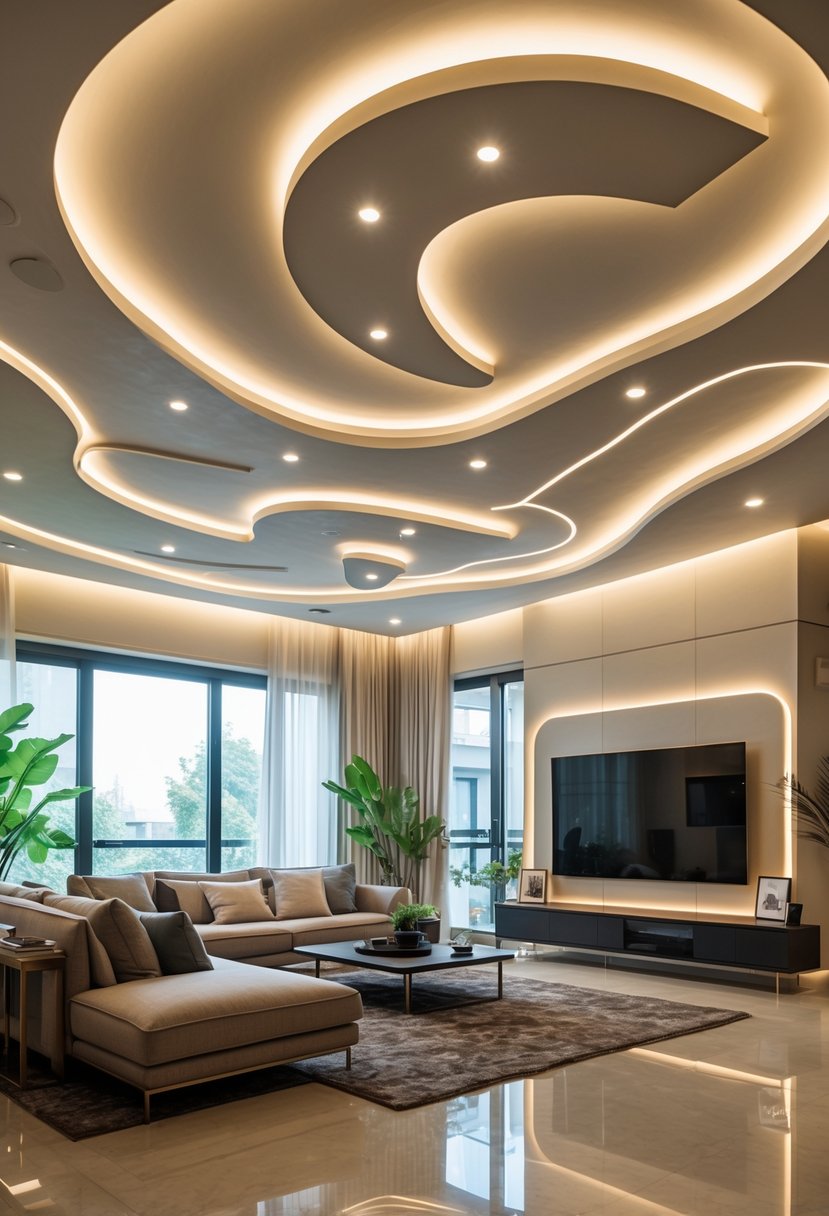
Curved false ceilings add soft lines that bring a gentle flow to the living room. They break away from the typical straight edges, making the ceiling more interesting. This design can also help to create a warm and inviting atmosphere without overwhelming the space.
9) Pop art-inspired false ceiling
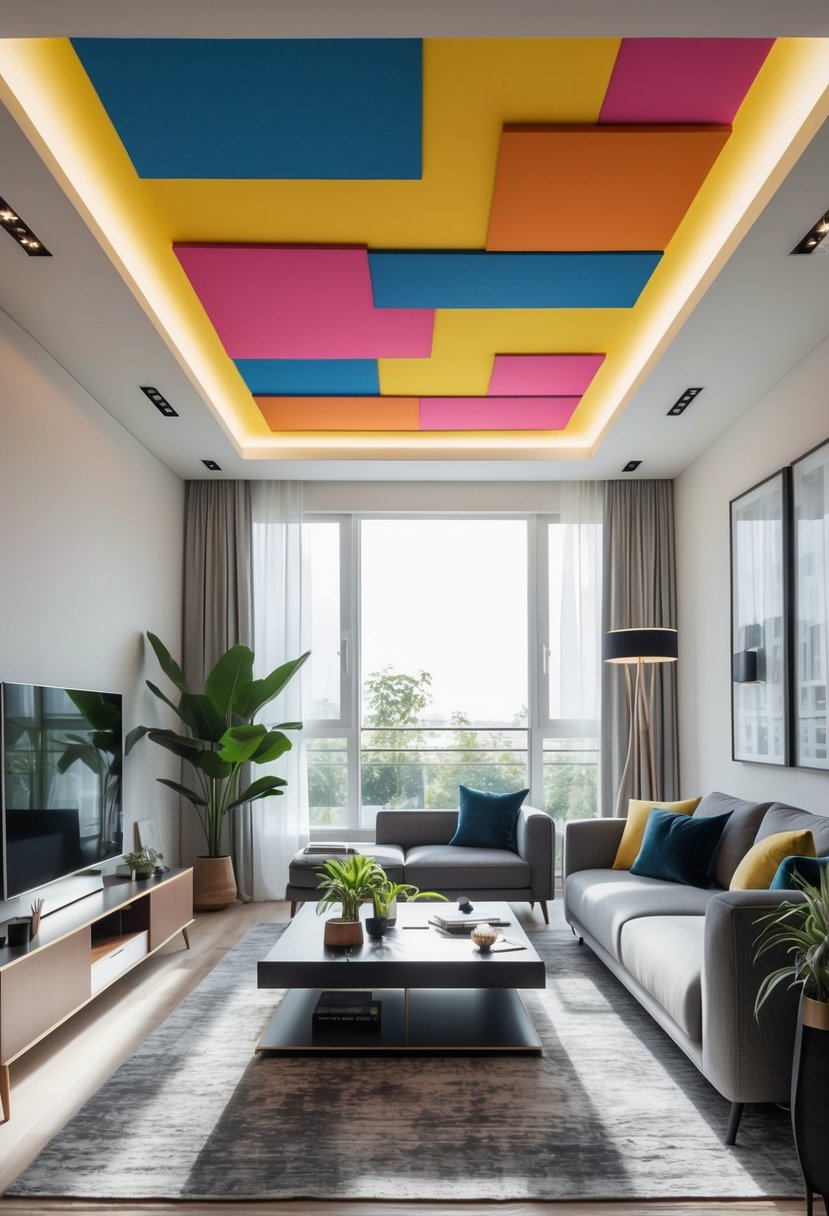
This design uses bold colors and geometric shapes to create a lively look. It adds a modern and artistic touch to the living room. The patterns often include bright accents that stand out against neutral backgrounds. This style works well in spaces that aim for a creative and playful atmosphere.
10) Metallic coated false ceiling
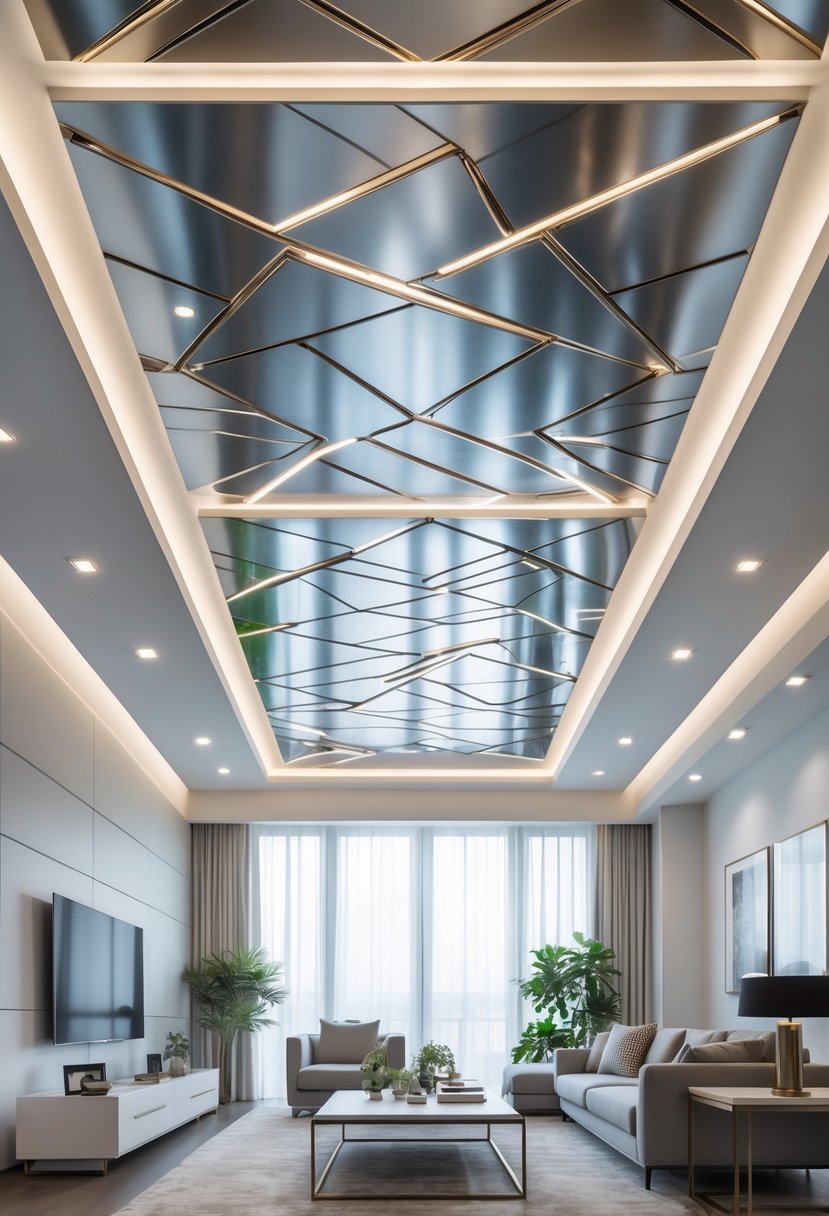
Metallic coated false ceilings add a sleek and modern look to the living room. They reflect light, making the space feel brighter and more open. This design suits both minimalist and industrial styles. It is durable and easy to clean, offering practical benefits alongside visual appeal.
Key Considerations Before Installing a False Ceiling

Choosing the right design for a false ceiling requires careful thought. Factors like the size of the room, ceiling height, lighting needs, and the materials used all affect the final result. These details help create a balanced and functional living space.
Room Size and Ceiling Height
The room’s size directly affects the false ceiling design. Larger rooms can handle bold, intricate patterns, while smaller rooms benefit from simple, clean lines to avoid feeling cramped.
Ceiling height is crucial. Rooms with low ceilings need false ceilings that do not reduce height much. A drop of more than 6-8 inches can make a room feel smaller. For higher ceilings, deeper recesses and multi-layered profiles work well and add depth.
Measuring the available space accurately before planning is important. It helps avoid designs that don’t fit the room’s proportions or reduce room volume too much.
Lighting and Electrical Planning
False ceilings allow for hidden lighting, which greatly changes the room’s look. Planning where lights, fans, and sensors will go should happen before installation.
Common lighting options include recessed LED lights, cove lighting, and spotlights. These can highlight different parts of the room or create mood lighting. The layout should also consider wiring paths and access points for maintenance.
Coordination with an electrician early in the process prevents electrical problems later. Proper planning avoids needing changes after the false ceiling is installed.
Material Selection for Longevity
Choosing strong, durable materials is key for a lasting false ceiling. Gypsum board is popular because it is fire-resistant and smooth. However, it should be protected from moisture.
PVC panels are lightweight and water-resistant, making them good for rooms with humidity. Wood or wood-look panels add warmth but need treatment to avoid warping.
Another factor is ease of maintenance. Materials that resist dust and stains help keep the ceiling clean without frequent repairs. Waterproof options help prevent damage in kitchens or areas prone to moisture.
| Material | Pros | Cons | Best Use |
|---|---|---|---|
| Gypsum Board | Fire-resistant, smooth | Sensitive to water | Living rooms, bedrooms |
| PVC Panels | Water-resistant, light | Less natural look | Kitchens, bathrooms |
| Wood Panels | Warmth, design variety | Requires treatment | Living rooms, dining areas |
Common Mistakes to Avoid in False Ceiling Designs
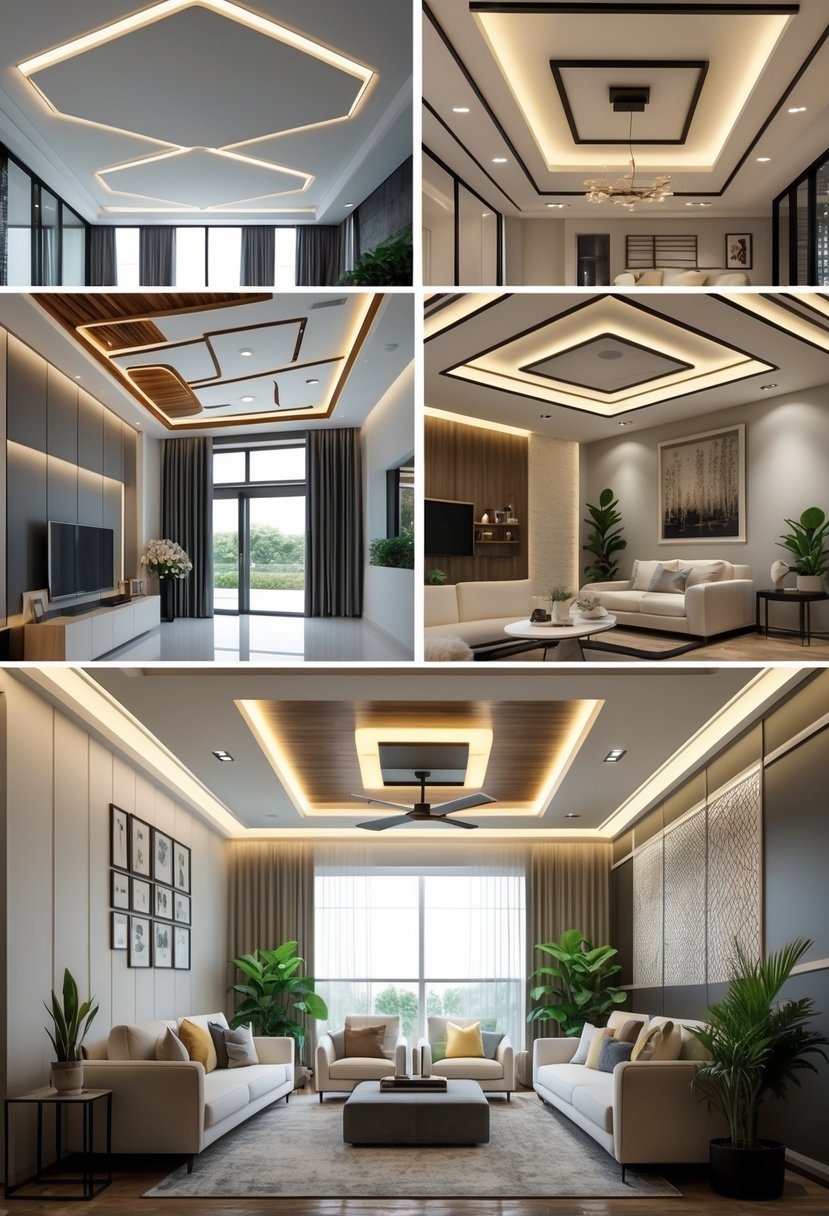
Many false ceiling problems come from overlooking key practical details. Poor airflow, overly complex designs, and ignoring upkeep needs are main causes of issues later on. Focusing on these areas helps create a better, longer-lasting ceiling.
Ignoring Proper Ventilation
Proper ventilation is essential in false ceiling design. Without enough airflow, rooms can become damp or stuffy. This leads to mold growth, unpleasant odors, and damage to ceiling materials.
Designers and homeowners must plan for vents or gaps that allow air circulation. Placing exhaust fans or air conditioning ducts correctly within the ceiling space is important. Otherwise, trapped heat and moisture will shorten the ceiling’s life.
A failure to consider ventilation can also affect comfort levels. Rooms may feel hotter or colder than intended. This reduces the benefits of any temperature control system installed.
Overcomplicating Design Elements
False ceilings with too many layers, curves, or patterns look impressive but often cause problems. Complex designs increase installation time and costs significantly.
They also raise the risk of structural flaws or uneven surfaces. Small errors become more visible, undermining the aesthetic appeal.
Simple, clean designs often work better in living rooms. Using fewer materials and focusing on symmetry improves durability. It also makes future repairs easier.
Complicated lighting arrangements hidden in false ceilings can create maintenance headaches. Keeping fixtures accessible and minimizing wiring tangles is advised.
Neglecting Maintenance Factors
Maintenance is often an afterthought in false ceiling planning. This leads to problems when issues like cracks or stains occur.
Designs should allow easy access to pipes, wires, and fixtures hidden above. Removable panels or accessible openings help with inspection and repairs.
Ignoring this creates unnecessary costs because sections of the ceiling might need full replacement to fix minor problems.
Regular cleaning is necessary to prevent dust accumulation, which affects lighting and air quality. Choosing smooth, washable surface materials simplifies cleaning tasks over time.
Frequently Asked Questions
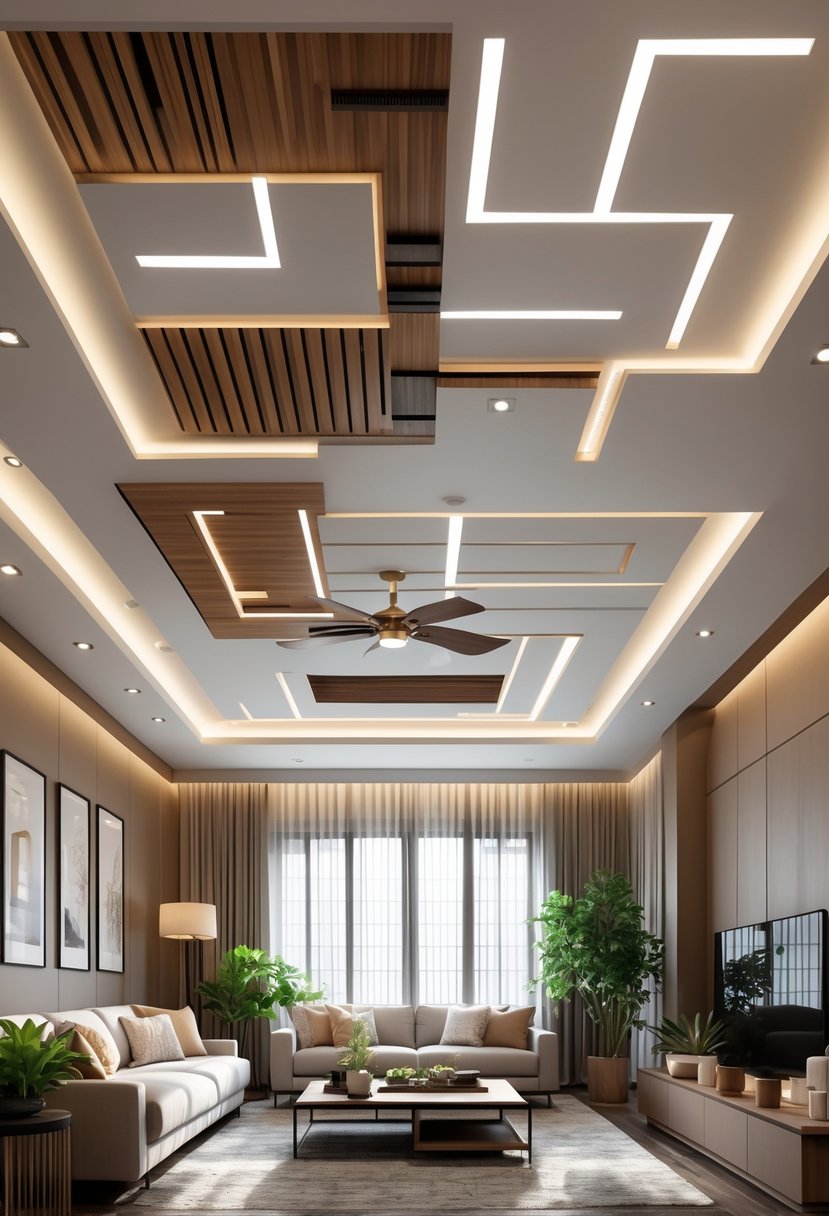
False ceiling designs for living rooms now focus on combining style with function. Popular options include using layers to add depth and integrating lighting to highlight features.
What are the latest trends in false ceiling designs for living rooms?
Layered gypsum board ceilings are common, offering a modern, textured look. LED strip lighting is often used within the ceiling to create an ambient glow. Coffered ceilings bring a traditional yet stylish feel with recessed panels. Minimalist white panels keep the space clean and bright. Wood finish ceilings add warmth and a natural touch to the room.
How do I choose the best false ceiling design for a spacious living room?
For large living rooms, proportion matters. Layered designs can create sections, breaking up the big area visually. Lighting like LED strips helps define spaces. Materials should match the room’s style and function. For example, wood finishes bring coziness, while white panels keep it open and airy. It is important to consider ceiling height, existing decor, and lighting needs.
